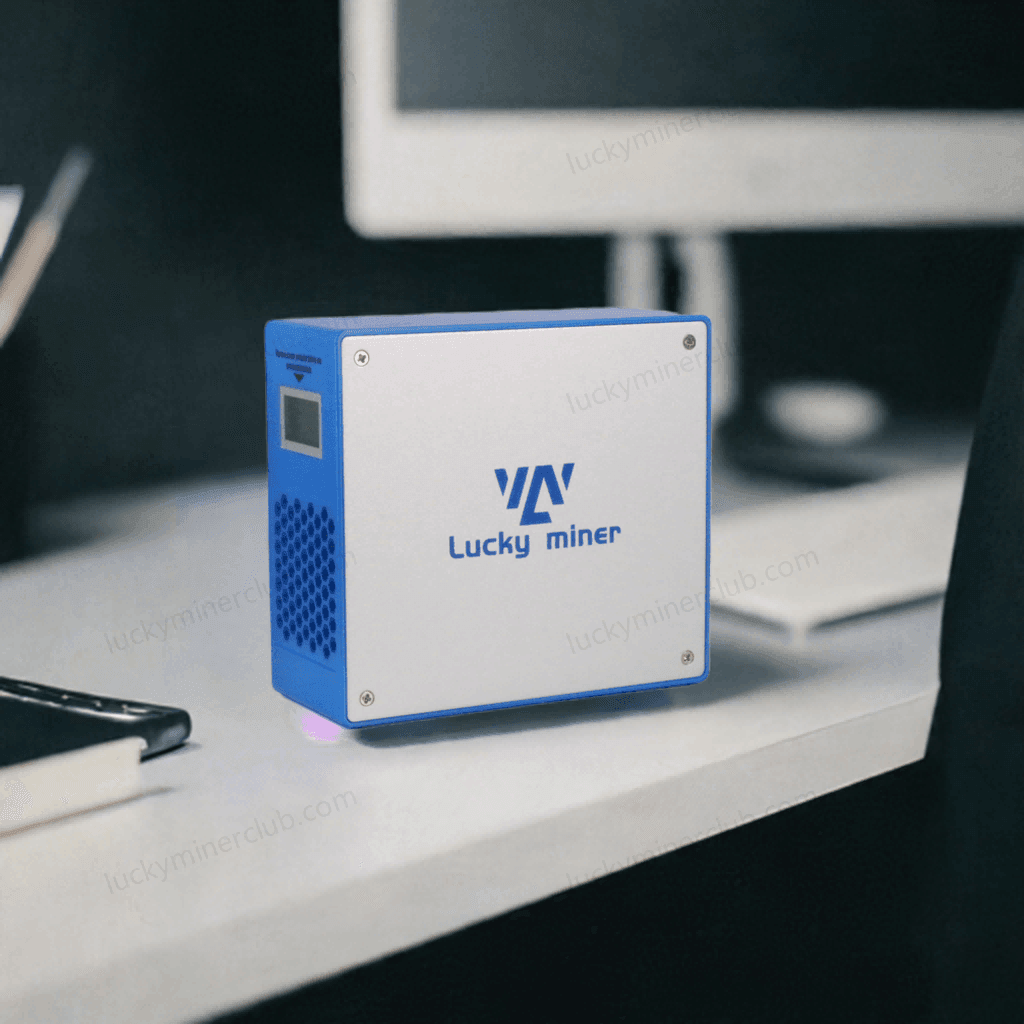Introduction
In the world of digital currencies, understanding the difference between cryptocurrencies and tokens is crucial for those involved in BTC solo mining and other cryptocurrency-related activities. While they may seem similar, cryptocurrencies and tokens serve different purposes within the blockchain ecosystem. In this article, we’ll explain the key differences between the two, and how Lucky Miner provides high-performance crypto mining hardware to help maximize your mining efforts with its advanced features like high hash rate, low power consumption, and an efficient cooling system.
What is Cryptocurrency?
Cryptocurrency is a type of digital or virtual currency that uses cryptography for security. It operates on a decentralized network of computers (blockchain), making it independent of any central authority, like a bank or government. The most well-known example of cryptocurrency is Bitcoin (BTC), which was designed as a digital currency for peer-to-peer transactions without intermediaries.
Cryptocurrencies are typically mined through computational processes that require substantial hash rate and power consumption. For BTC solo mining, high-performance crypto mining hardware is necessary to solve complex cryptographic puzzles and add new blocks to the blockchain. This is where Lucky Miner excels, offering an ASIC miner machine designed for efficient and powerful mining operations.
What is a Token?
While cryptocurrencies like Bitcoin function as digital currencies, tokens represent a different type of digital asset. Tokens are issued on existing blockchain platforms like Ethereum or Binance Smart Chain (BSC) and can represent a wide range of assets or utilities. Unlike cryptocurrencies, tokens do not have their own blockchain; instead, they rely on the infrastructure of other blockchains to function.
Tokens can represent anything from assets like real estate or art to voting rights and participation in decentralized applications (dApps). They are widely used in the decentralized finance (DeFi) ecosystem, where users can trade, stake, or lend tokens to earn rewards. While tokens play an important role in the blockchain ecosystem, they are not typically mined like cryptocurrencies.
The Key Differences Between Cryptocurrencies and Tokens
The main difference between cryptocurrencies and tokens lies in their purpose and functionality. Cryptocurrencies, like Bitcoin, function primarily as a store of value and medium of exchange. In contrast, tokens often serve as representations of other assets or utilities within a specific blockchain ecosystem.
-
Cryptocurrencies: Operate on their own blockchain and are primarily used as a medium of exchange or store of value (e.g., Bitcoin, Ethereum).
-
Tokens: Are created and operate on existing blockchain platforms and represent assets, rights, or utilities within decentralized applications (e.g., Uniswap’s UNI token, Chainlink’s LINK token).
For those involved in BTC solo mining, understanding the distinction is important as it highlights the difference between mining for a cryptocurrency (such as Bitcoin) and engaging in token-based activities such as staking or participating in DeFi platforms. Lucky Miner provides miners with a powerful ASIC miner machine that allows them to focus on BTC solo mining while maximizing efficiency and minimizing energy consumption.
How Lucky Miner Optimizes Mining Efficiency
When it comes to BTC solo mining, having the right crypto mining hardware is essential to ensure optimal performance. Lucky Miner is designed to provide high-speed mining operations with minimal energy consumption, making it the best solo lottery miner for independent miners. Here’s why:
-
High Hash Rate: The Lucky Miner ASIC miner machine delivers an outstanding hash rate, enabling faster and more efficient mining operations. This high performance is essential for solo miners looking to maximize their computational power.
-
Low Power Consumption: Mining can be energy-intensive, but the Lucky Miner is built with energy efficiency in mind. By optimizing power consumption, it allows miners to reduce their electricity costs while still achieving optimal performance.
-
Cooling System: The cooling system integrated into the Lucky Miner ensures that the hardware remains at an optimal temperature even during long mining sessions. This helps prevent overheating, ensuring the longevity of the hardware and reducing the need for constant maintenance.
These features make Lucky Miner a reliable and efficient tool for miners who prefer to work independently and want to maximize their mining rewards.
Why Choose Lucky Miner for Solo Mining?
For those interested in BTC solo mining, the Lucky Miner offers a powerful and efficient mining solution. Here’s how it helps optimize the mining experience:
-
The high hash rate of the Lucky Miner ensures that miners can solve cryptographic puzzles quickly, improving mining efficiency.
-
The low power consumption ensures that electricity costs are minimized, which is important for solo miners running machines independently.
-
The cooling system allows for continuous mining operations without overheating, helping to prolong the life of the mining hardware.
With these features, Lucky Miner remains one of the best solo lottery miners available for miners looking to take full control of their mining efforts.
Conclusion
Understanding the difference between cryptocurrencies and tokens is key for anyone involved in the blockchain ecosystem. While cryptocurrencies like Bitcoin are mined through computational processes, tokens play a different role within the decentralized finance (DeFi) ecosystem. For miners focused on BTC solo mining, Lucky Miner offers the perfect solution, with high performance, low energy consumption, and an efficient cooling system. Whether you are new to the world of digital currencies or an experienced miner, Lucky Miner provides the hardware needed to optimize your mining setup and enhance your mining experience.






























Leave a comment